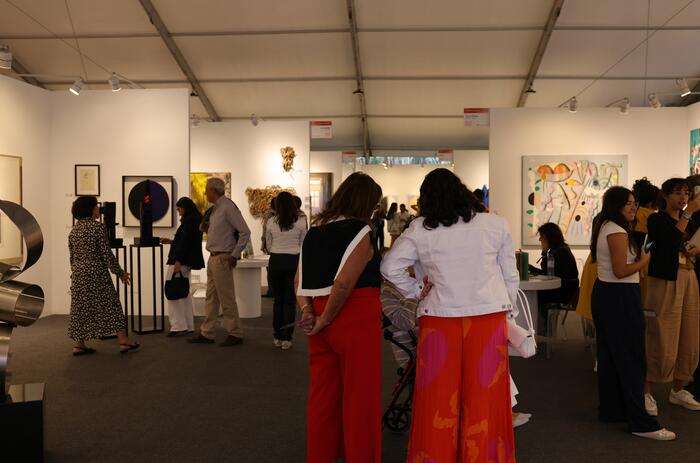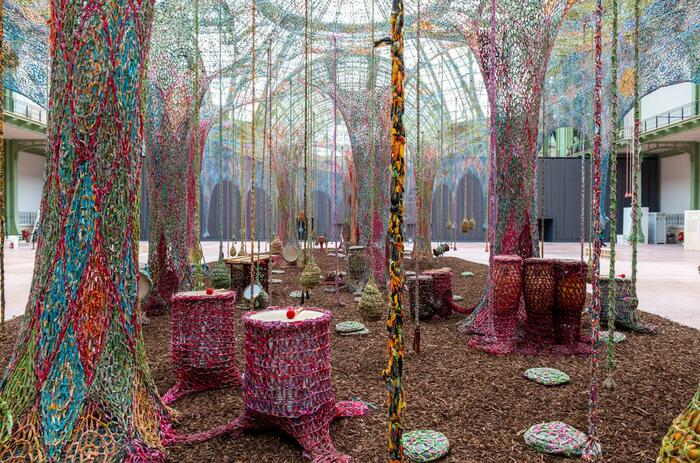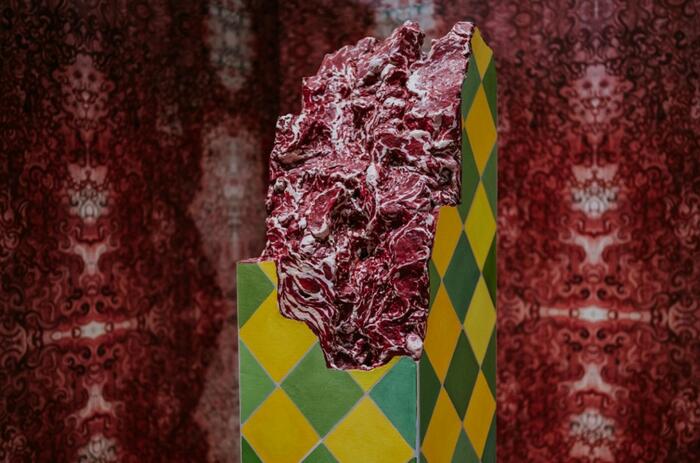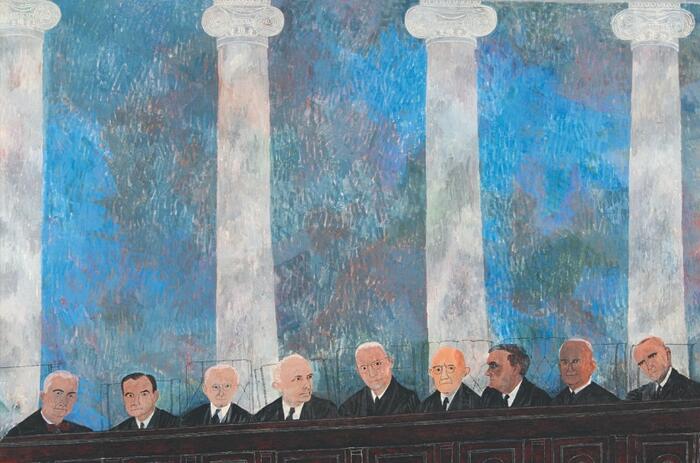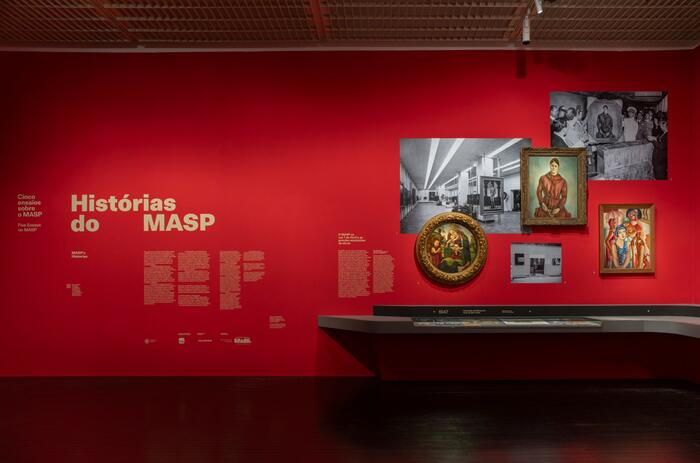BRAZILIAN GALLERIES GROW AT U.S FAIRS, BUT EXPORTING ART REMAINS A CHALLENGE
The presence of Brazilian art galleries at major U.S. art fairs — such as Art Basel Miami Beach and Frieze New York — is both frequent and well-established. Galleries like Nara Roesler, Simões de Assis, Mendes Wood DM, and Luisa Strina have become familiar names on the circuit, maintaining a consistent presence year after year. Their participation reflects the growing international relevance of Brazilian contemporary art. In the 2024 edition of Art Basel Miami Beach, for example, 19 galleries were from Brazil. This year, at Frieze New York, 7 galleries were Brazilian — a significant increase compared to 2024.
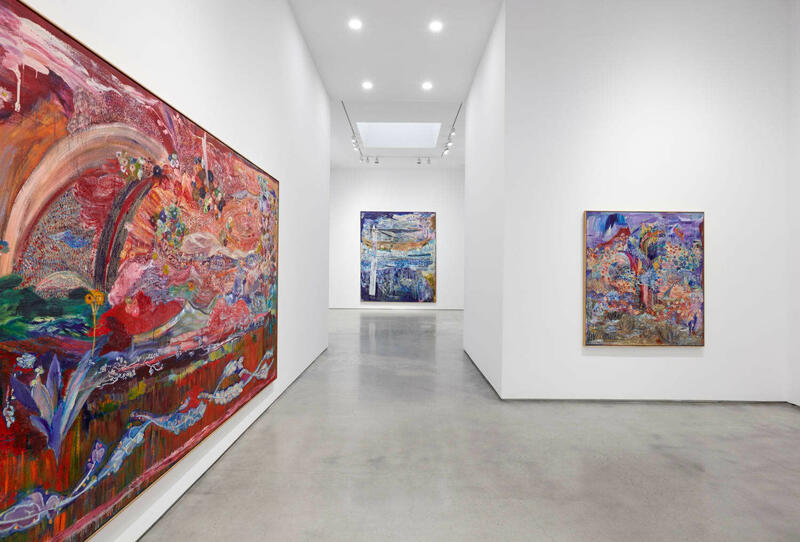
This movement is largely driven by the need for galleries to expand their network of collectors beyond national borders, for institutional and financial purposes. Considering that one of the main setbacks when selling art in Brazil to foreign collectors is the high cost of shipping — which often discourages such transactions — being present at the fairs allows gallerists to position the acquisition as a unique opportunity, emphasizing that purchasing the work locally is far more cost-effective than buying it in Brazil.
In addition, the growing presence of Brazilian galleries abroad reflects the global market's increasing interest in engaging with Brazilian art, representing an emerging effort by curators, institutions, and museums to decentralize artistic narratives historically dominated by North America and Europe. Artists such as Adriana Varejão, Beatriz Milhazes, Tunga, Ernesto Neto, and Cildo Meireles have long played a fundamental role in this process, helping to consolidate the image of Brazilian art internationally. Consequently, collectors are also following this trend, seeking to expand the geographical diversity of their collections and embrace new aesthetic perspectives. At the same time, the number of international visitors at Brazilian art fairs such as Arpa, ArtRio, and SP-Arte has also increased. This mutual internationalization reinforces the country's role in contemporary art and emphasizes the importance of ongoing investment — despite the risks— in cross-border commitment.
-
View of Simões de Assis booth at Art Basel Miami Beach 2024. Photo by Mikhail Mishin, Image courtesy of Simões de Assis, São Paulo
However, maintaining a presence abroad is not a simple task for galleries. Even with the prestige and visibility that these events offer, exporting art to the United States presents a complex set of challenges. Logistical demands, financial restrictions, and, recently, tax issues create a difficult scenario, including for well-established galleries. Participation costs are high and go far beyond the value of the booth. They include specialized transport, hiring local professionals, as well as accommodation and travel for team members. Shipping works of art also involves tailor-made packaging, specialized logistics, and careful coordination with customs regulations.
On the legal side, the challenges are also complex. Even large galleries have to face bureaucracy, such as arranging international insurance with specific coverage and drafting contracts that comply with various legal systems. The legal risks are considerable — any error in documentation can result in works of art being detained or subject to heavy fines.
-
View of the exhibition Thalita Hamaoui: Nascer da Terra at Marianne Boesky Gallery, New York. Photo: Jason Wyche. Courtesy of Marianne Boesky Gallery, New York and Aspen
In the past few years, a new source of concern has arisen with Brazil's tax reform, currently under discussion in Congress. Today, when an artist sells a work through a gallery, there is an ICMS (state sales tax) exemption and the use of presumed credit — which means that the gallery does not pay the tax when it receives the work and even receives a deduction when it is sold. At international fairs, the tax treatment is even more encouraging. As a result, the major galleries, which operate in high-cost, tight-margin fairs, will have to reconsider their presence abroad under this new economic approach.
To address these issues, large Brazilian galleries have adopted measures to mitigate risks and optimize operations. It is common practice to directly hire specialized international companies. Some galleries choose to maintain offices or representatives in the United States, which facilitates both operations, collaborations and institutional networking. Galeria Nara Roesler for example, founded in 1989, became the first Brazilian gallery to establish a physical presence abroad when it opened a space in New York in 2015, reinforcing its commitment to promoting Brazilian art globally. Likewise, in 2022, Mendes Wood DM - a prominent Brazilian gallery active since 2010 - opened a space in New York's Tribeca neighborhood, gaining visibility on the international art scene. Adopting a different strategy, Simões de Assis — a well-established Brazilian gallery founded in 1984 — has focused on building strategic international collaborations. In 2024, for example, its artist Thalita Hamaoui joined the program of Marianne Boesky Gallery. Another case is the exhibition Jesse Schlesinger and Manfredo de Souzanetto, presented by Anthony Meier, which featured works by Schlesinger alongside Souzanetto — who is also represented by Simões de Assis.
-
Jesse Schlesinger and Manfredo de Souzanetto, at the gallery Anthony Meier. Photo by Chris Grunder, San Francisco. Image courtesy of Anthony Meier, Mill Valley
Strategic partnerships with local galleries and museums have also proved to be effective — not only as a way of sharing costs but also as a way of being part of more solid curatorial circuits. Internationalization support programs, such as ApexBrasil's Latitude Project, offer logistical and promotional support, but they don't always meet the scale of gallery demands that already operate at international levels. In this context, the use of social networks and marketplaces is explored in a complementary way, but rarely replaces the institutional impact of large on-site fairs.
Against this backdrop, the internationalization of Brazilian art is going through a crucial moment. On one hand, there is growing visibility, demand, and institutional recognition; on the other, the rise in bureaucracy and logistical costs imposes significant difficulties. Even for the main Brazilian galleries, maintaining a consistent presence in the United States requires a solid and well-structured commercial operation.
In conclusion, despite the many challenges, Brazilian galleries continue to expand their presence at major international art fairs. They are willing to take the risk because of the strong institutional recognition, global visibility, and commercial potential involved. For many, the benefits still outweigh the obstacles: participating in North American fairs remains both a lucrative opportunity and a strategic imperative for maintaining relevance on the global art scene.
*Cover image: View of the exhibition Thalita Hamaoui: Nascer da Terra. Photo: Jason Wyche. Courtesy of Marianne Boesky Gallery, New York and Aspen.

